Creative Exercises to Determine Whether to Revive or Release a Fading Passion
Deciding whether to continue pursuing a passion or let it go requires honest self-assessment and structured experimentation. This article presents 26 practical exercises designed to help clarify that decision, drawing on insights from experts who understand the psychology of motivation and burnout. These strategies range from tracking energy patterns to testing your commitment through real-world challenges.
- Track Energy Levels for Each Activity
- Observe What Your Mind Reaches For
- Log Your Anger to Reveal Patterns
- Read Every Customer Feedback Response Personally
- Return to Customer-Facing Work Each Saturday
- Compare Energy Levels Between Different Projects
- Jump Into Production Instead of Study
- Inventory Draining Tasks Versus Energizing Ones
- Assign Yourself an Absurd Challenge for Fun
- Rotate Through Three Different Work Settings
- Document Evidence to Confront Harsh Consequences
- Accept Only Hardest Meetings for Ninety Days
- Write Down Why Customers Return or Refer
- Spend One Week Doing the Actual Work
- Create Weekly Content for Ninety Consecutive Days
- Schedule Dedicated Time for Stress Testing
- Block Out a Zero-Budget Weekend Immersion
- Document Specific Market Gaps for Ninety Days
- Measure Real Client Impact Beyond Numbers
- Return to Ground Level Warehouse Operations
- Journal Daily About Each Aspect You Revisit
- Record Energy Scores Before and After
- List What Drains You Versus Energizes You
- Remove All Expectations for One Full Week
- Set a Strict Timer for Flow
- Immerse Yourself in Extended Silent Focus
Track Energy Levels for Each Activity
I’m a clinical social worker who’s spent 15+ years helping people work through exactly this kind of stuck place–career confusion, creative blocks, identity shifts. A few years ago I used one of my own techniques on myself when I was questioning whether to keep teaching at UK while building Kinder Mind.
I assigned myself a “values audit”–I tracked every single work activity for two weeks and rated each one on a 1-10 scale for energy vs. drain. Teaching my MSW students? Consistently 8-9. Certain administrative tasks? Solid 3s. That data showed me teaching wasn’t the problem–how I was structuring my time around it was. I restructured, kept both roles, and my burnout disappeared.
For creative passions specifically, I’ve had clients do “mini-sabbaticals”–commit to their dying interest for just 14 days with zero pressure to produce anything. One writer client hadn’t touched fiction in months but agreed to write badly for two weeks. By day 11 she knew–the relief she felt when the experiment ended told her everything. She wasn’t sad to stop, she was *relieved*, which meant it was time to let go.
The key is measuring your *emotional response* to the work, not just whether you’re “good at it” anymore. Track energy levels, track whether you’re avoiding or seeking it out, track what thoughts come up. That data cuts through all the “shoulds” that keep us clinging to dead passions.

Observe What Your Mind Reaches For
The most revealing creative exercise I’ve ever done to test whether a fading passion was worth reviving was something I call “the silent week.”
For seven days, I completely stopped producing and consuming anything related to that field — no sketching, no social media, no industry podcasts, nothing. I simply observed what my mind reached for when it was quiet.
By the third day, I realized that if a passion is still alive, it starts to knock again. You find yourself daydreaming ideas, noticing colors, framing compositions in your head without trying. But if it stays silent, if your mind feels relieved instead of restless, that’s your answer.
When I tried this with tattooing years ago — during a period of burnout — I couldn’t stop visualizing designs, thinking of forms, imagining stories on skin. That’s when I understood: the passion wasn’t gone, I had just buried it under routine and expectation.
So I came back, but differently — with fewer rules and more curiosity. The exercise worked because it separated habit from desire. Passion isn’t measured by momentum; it’s measured by what still pulls you back when everything else is quiet.

Log Your Anger to Reveal Patterns
I’m Executive Director of PARWCC, and after 30+ years in career services, I’ve watched professionals (and myself) wrestle with this exact question constantly.
Here’s what gave me clarity: I stopped asking “Do I still love this?” and started tracking my anger. Seriously. I kept a simple log for two weeks noting every time I felt genuinely pissed off about something in the industry–bad career advice online, uncredentialed “coaches” hurting job seekers, people using generic templates. By day 10, the pattern was obvious: I wasn’t angry at career services, I was furious at how poorly it was being done without standards.
The exercise that sealed it was what I call “the vacuum test” (literally came to me while vacuuming my condo). I realized my vision for the profession in 2020 was identical to 1990–that job seekers should be *excited* to work with us, not dreading their search. That sameness initially scared me–had I wasted 30 years chasing the same dream? But then I asked myself: “If this vision still makes my heart race after three decades, is that stagnation or proof I found my real work?”
The metric that confirmed it: When I started asking our 3,000 members “How many of your clients need sleeping pills because they’re too excited about their job search to sleep?” I got laughs, but also immediate engagement. That question sparked more passionate responses and innovation from our community than any survey I’d sent in years. When your “old” passion generates new energy in others, you’ve got your answer.

Read Every Customer Feedback Response Personally
I didn’t have a moment questioning my passion–I had 40 years of it. But when member satisfaction scores plateaued across our Just Move locations, I knew something had to change or I’d be coasting instead of leading.
The experiment was simple: I personally started reading every single Medallia feedback response that came through. Not summaries from my team–the actual member comments, complaints, and suggestions. If that felt like a chore after week one, I’d know I’d lost the fire.
What happened was the opposite. A member at our Winter Haven location mentioned wanting better post-workout recovery options, which led us to upgrade our sauna facilities. Another asked about tracking progress beyond the scale, which pushed us to implement the Fit3D Pro Body Scanner across all locations. I’d catch myself at night thinking about how to solve these problems.
The clarity came when members started specifically messaging to say “someone actually listened.” That feedback loop–seeing real people get real results from changes I helped implement–told me I was exactly where I needed to be. If you’re questioning your path, stop analyzing and start solving the smallest, most annoying problem your customers mention. Your energy level while doing it will tell you everything.
Return to Customer-Facing Work Each Saturday
I didn’t have one single passion crisis–I had a weekly decision point about four years into running The Nines. I was burnt out, second-guessing everything, and honestly considering selling up. So I gave myself a weird test: I forced myself to work the floor every Saturday morning for a month straight, taking orders and chatting with customers instead of hiding in the back doing admin.
If I dreaded those Saturdays, I’d know it was time to walk. But something clicked when a regular told me her kids specifically requested “the pancake place” for her birthday breakfast, and I realized I’d created something that mattered to people beyond just selling food. That month I also started playing with our first monthly special (a loaded Biscoff shake that absolutely went off), and I caught myself genuinely excited to see people’s reactions on Instagram.
The real clarity came from tracking one simple thing: how often I was saying “we should try this” versus “I can’t deal with this.” By week three, my ratio flipped hard toward the excited ideas. That told me the spark wasn’t dead–I just needed to get back to the creative, customer-facing stuff that made me open a cafe in the first place, not drown in spreadsheets.
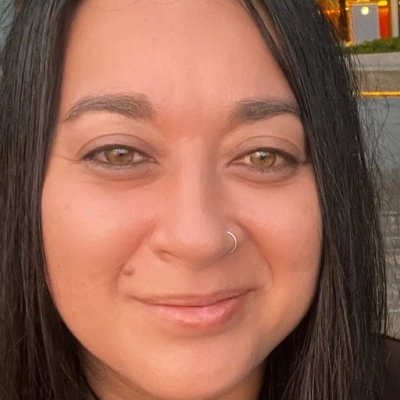
Compare Energy Levels Between Different Projects
I didn’t do one creative exercise–I did something more desperate. At 60, stuck in a well-paying nonprofit job, I was literally forcing myself to care about spreadsheets that used to energize me. The moment of clarity came when I sat down at my drum kit after work one night and realized that was the only hour all day where I hadn’t checked the clock.
So I ran a brutal test: I took on a small web design side project (something I’d learned on the job) and tracked my energy levels hour by hour versus my day job. When I found myself sketching website wireframes at 10 PM and feeling *more* awake, not drained, I had my answer. The accounting work was making me watch the clock; the creative digital work was making me lose track of time entirely.
Here’s what sealed it–I started telling people at networking events about my drumming background and how I saw rhythm in web design. If I got polite nods, I knew I was forcing a story. But when people leaned in and said “wait, tell me more about that,” I knew I’d found something genuine. Those conversations turned into my first clients, and nine years later, I’ve kept almost every single one because the passion is real.
The real test isn’t whether you *can* do something–it’s whether you’re still doing it when nobody’s making you.
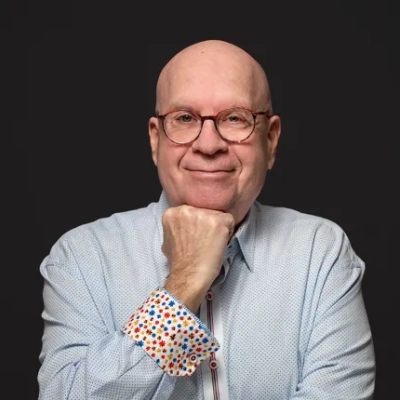
Jump Into Production Instead of Study
The creative experiment that helped me decide whether to revive my fading passion for filmmaking was simply this: make a film instead of studying how to make one. I skipped the years of being on sets, film school, and shadowing others. I wrote the script, pitched it like a salesperson, secured interest from financiers, hired the best DP and crew I could find, and built the entire project from the ground up.
Jumping straight into filmmaking, asking questions of others who had done it before, and organizing the production myself gave me plenty of clarity, and fast. I learned what I loved—the production process, the creative decision-making, the editing—and what I absolutely didn’t, like film financing and the administrative grind behind it. Instead of killing the passion, the experiment refined it. I realized I wasn’t drawn to “the industry.” I was drawn to independent filmmaking, especially now that online distribution has replaced the old DVD-and-theater gatekeeping model.
By jumping straight into the deep end, I didn’t just rediscover the passion but figured out which version of it was truly mine. Some people just get their feet wet. Some people like to take a deeper dive. If you’re not afraid to fail, and it truly is a passion, do the deeper dive.

Inventory Draining Tasks Versus Energizing Ones
When I faced burnout while juggling freelance writing, my content agency, and ghostwriting projects, I found myself seriously considering a complete pivot to tech consulting. The creative process that provided clarity was intentional self-reflection—specifically, setting aside time to thoroughly inventory what aspects of my work were draining versus energizing. This structured reflection revealed I wasn’t facing a passion problem but rather an operational one, as I was making decisions from a place of exhaustion rather than strategy. Instead of abandoning my field, I restructured my business approach and built a stronger team to handle aspects that were consuming my energy. This deliberate process helped me distinguish between needing a complete career change versus making strategic adjustments to revive my commitment to work I genuinely valued. The clarity came from creating space between the emotional experience of burnout and the actual decision-making process about my professional future.

Assign Yourself an Absurd Challenge for Fun
I’ve spent over 40 years in this business, and the moment that tested my passion came after a brutal crisis management case in the early 2000s. I was exhausted and questioning whether I still loved the work or was just running on reputation.
I gave myself what I called “the Warhol test” – remembering my early days at Interview magazine when Andy would assign me wild stories just to see what I’d bring back. So I pitched myself the most absurd assignment I could imagine: cover a dog charity gala in the Hamptons like it was the Met Gala. If I could make that sparkle on the page, I still had it.
I wrote that piece at 3am with champagne and genuine joy, finding drama in poodle politics and society matrons competing over rescue mutts. When it ran, three editors called wanting more columns. That’s when I knew – I wasn’t burned out on PR and society coverage, I was burned out on taking it too seriously.
The clarity came from giving myself permission to play again instead of perform. If your passion feels like an obligation, strip away the pressure and do it badly on purpose. You’ll quickly find if you miss doing it well.

Rotate Through Three Different Work Settings
I did a “three-month rotation experiment” when I was burned out in emergency medicine after 15 years. I committed to working one shift per week in three completely different settings–my community ER with seniors, a high-volume urban trauma center, and moonlighting at an urgent care. I tracked which shifts I left feeling energized versus depleted.
The data shocked me: my senior ER shifts consistently left me feeling purposeful, while the trauma center drained me despite the adrenaline rush I thought I loved. What I found was that I wasn’t losing passion for emergency medicine–I was craving more time with patients and teaching residents, not just rapid-fire door-to-door times.
That clarity led me to pivot into medical aesthetics training in Chicago while keeping my ER work focused on the senior population. Now at Aura, I spend 45 minutes doing consultations and explaining treatment plans in detail, which mirrors what I loved most about medicine. My ER shifts went from feeling like a grind to being genuinely fulfilling again because I’m not forcing myself into the “ideal” ER physician mold anymore.
The metric that confirmed it? I stopped dreading my work schedule for the first time in three years, and I actually started mentoring residents more actively because I had the headspace for it.

Document Evidence to Confront Harsh Consequences
I didn’t have a “fading passion”–I had a dying life. My experiment wasn’t creative, it was survival: I kept a brutally honest drinking diary for three days before rehab. Every drink, every lie I told, every moment I couldn’t remember. When I reread it sober on day four, I saw patterns I’d denied for years–the 7 AM wine to stop shaking, the aggression that came from nowhere, the fact that I’d threatened my partner with a broken bottle.
That diary didn’t give me clarity about passion–it gave me clarity about consequence. I realized I wasn’t questioning whether to continue drinking; I was documenting evidence for why I had to stop or die. The difference between reviving something and letting it go became obvious: if reading your own words makes you want to set the page on fire from shame, you’re looking at something that needs to end, not be revived.
The real test came later in recovery when I started journaling daily as part of my program. I’d write “Today I feel…” prompts and actually look forward to it. That’s when I knew counseling was my new path–I was doing the hardest emotional work at 11 PM and waking up energized to help others do the same. Nine years sober now, and I still use that same journaling method with clients to help them see their own patterns.

Accept Only Hardest Meetings for Ninety Days
I’m a military vet turned tech CEO who’s led companies through every kind of pivot imaginable—so I’ve definitely wrestled with the “stay or go” question on multiple fronts.
My clarity moment wasn’t an exercise—it was co-founding Provisio Partners in 2017 after years of consulting work that felt increasingly disconnected. I ran a brutal 90-day test: I only took meetings with nonprofits in human services and tracked one metric: Did I leave energized or drained? After helping a homeless services org cut their crisis response time from 60 minutes to 15 minutes using Salesforce, I was sketching solutions at midnight. That told me everything.
The real validator came when clients started calling me directly for their hardest problems—like when we built a system for Children’s Emergency Relief International spanning five countries. If you’re questioning your thing, stop overthinking and spend 30 days doing the absolute hardest version of that work. Your 11 PM energy level will give you the answer—no journal prompts needed.
My Air Force background taught me that clarity comes from stress-testing under real conditions, not theoretical exercises. Put yourself in the deepest problem in your field and see if you’re solving it or running from it.
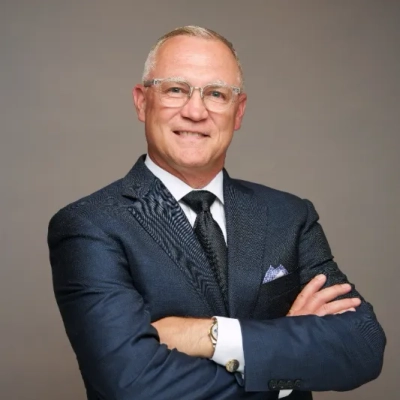
Write Down Why Customers Return or Refer
I didn’t have a fading passion–I had a shed business that could’ve easily stayed small and local forever. The clarity came from a deliberate experiment: I started tracking *why* customers came back or referred friends. Not general feedback, but specific reasons written down in a notebook after every repeat sale.
After about eight months, the pattern was obvious. People didn’t just want storage–they wanted spaces that solved real problems. Garages for woodworking shops. Chicken coops designed for actual egg production. Garden sheds that became reading nooks. The customers who raved weren’t buying square footage; they were buying *purpose-built solutions* to reclaim parts of their lives.
That notebook changed our entire business model. Instead of just selling standard sheds, we started asking deeper questions during consultations: “What will you actually *do* in this space?” That one shift led to custom features becoming our standard–better insulation for year-round use, thoughtful window placement for natural light, layouts that actually matched how people live. Revenue followed because we were building what customers actually needed, not what was easiest to sell.
If you’re questioning your path, document what makes you feel useful versus what just fills time. The pattern will tell you whether to pivot how you work or pivot completely.

Spend One Week Doing the Actual Work
I was stuck working as a financial advisor at a major institution, thinking I’d finally solve small business owners’ problems. The “experiment” wasn’t intentional–I just started noticing that every time I gave mainstream financial advice, I’d go home frustrated. When clients would nod politely then clearly not implement anything, I felt hollow.
The breakthrough came when I actually sat down and analyzed my dad’s old business records after he mentioned missing my out-of-town tournaments again. He had decent financials but was completely trapped operationally. That single afternoon reviewing his books versus his calendar showed me the real issue wasn’t money–it was that he couldn’t leave for three days without everything falling apart.
I tested my theory by offering free operational audits to three small business owners instead of investment advice. Two of them teared up when I showed them how their businesses had imprisoned them. That emotional reaction told me everything–I quit the financial industry within two months.
The clarity exercise that worked: spend a week doing what you think your “new passion” actually is, not what you romantically imagine it to be. I thought I wanted to help with finances, but when I actually did operational problem-solving, I’d lose track of time. Your body tells you the truth before your brain admits it.
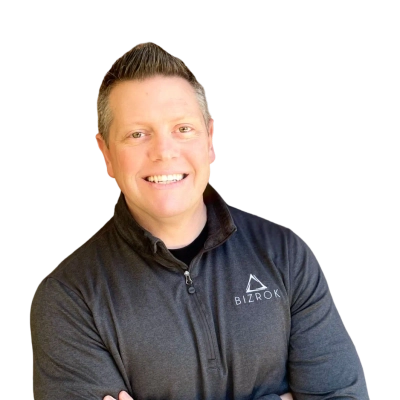
Create Weekly Content for Ninety Consecutive Days
I was stuck in submarine engineering after five years of service, feeling like I was running on autopilot. The turning point wasn’t some profound meditation–it was forcing myself to create one YouTube video per week for 90 days, even when I had zero audience and no clue what I was doing.
Here’s what gave me clarity: I tracked my energy levels before and after working on different projects. Submarine maintenance documentation? Drained by hour two. Scripting videos and editing at midnight? I’d look up and four hours had vanished. I also measured something concrete–I read 100 books on psychology, media, and business in those first years because I couldn’t stop consuming information about storytelling, whereas I’d previously struggled to finish one engineering manual.
The real test was financial fear versus creative pull. When I had the chance to stay in a stable Navy career path, I made myself pitch three real client projects for Gener8 Media with actual budgets and deadlines. Two said yes. That’s when I knew this wasn’t just escapism–I could actually build something here.
The metric that sealed it: when potential clients started reaching out to ME instead of me chasing them. If your “fading passion” attracts opportunities without you forcing it, and you’re willing to bet real money and time on it, it’s probably not fading at all.
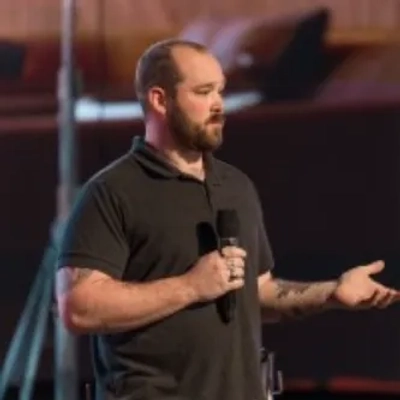
Schedule Dedicated Time for Stress Testing
Being the Founder and Managing Consultant at spectup, I learned that fading passion rarely disappears overnight. It usually slips away quietly while you’re busy juggling clients, investor talks, and internal deadlines. One exercise that helped me figure out whether to revive it or let it go was something I call the calendar stress test. I took one week and blocked a small window each day for the thing I thought I was losing interest in, and I treated it like a real commitment instead of a someday activity. I remember doing this with a side project that once excited me but had slowly become a source of guilt rather than energy. The rule was simple: if showing up to it gave me more clarity, curiosity, or even a bit of healthy challenge, it was worth keeping, but if it felt like pushing a dead weight up a hill every single day, I needed to be honest about letting it go.
The interesting part was how the act of scheduling removed all excuses, and with excuses gone, the truth became obvious. On day three, I caught myself looking forward to that dedicated block, which surprised me because I had assumed the passion was gone. One of our team members at spectup tried the same exercise for a stalled content series, and she realized the spark wasn’t gone—she was just overwhelmed by the lack of structure around it. That’s when I understood that passion often fades because the system around it breaks down, not because the passion itself disappears.
This experiment provided clarity because it forced a real test in real conditions instead of relying on emotional guesses. Passion that revives under structure is worth fighting for, but passion that feels heavier with structure usually needs to be released. At spectup, I often encourage founders to apply this test to product ideas, workflows, and even investor conversations. When you give something defined space instead of leftover space, you see its true value. In my opinion, this simple exercise helps you separate temporary fatigue from a genuine ending, and that distinction is what keeps your energy focused on what actually deserves your time.

Block Out a Zero-Budget Weekend Immersion
When faced with a fading passion—whether it’s for a product line, a marketing channel, or even a personal interest—I use what I call the “Zero-Budget Weekend” experiment. The mistake most people make is trying to analyze a fading passion using spreadsheets, but passion is an emotional asset, not a line item. The experiment is simple: block out a Saturday and Sunday, prohibit yourself from spending any money on the activity, and just immerse yourself in the fading passion.
The creative exercise here is to remove the financial investment and the pressure of expected results. If the passion truly exists, you should be willing to do the work just for the joy of the craft itself, even if you’re using cheap materials or old tools. For instance, when I had doubts about a product category at Co-Wear, I spent a weekend doing the design, sourcing, and mockups myself, just like when I first started, without consulting the team or the budget.
This activity provided clarity instantly. If I finished the weekend feeling energized, excited by the process, and proud of the minimal result, the passion was worth reviving and reinvesting in. If I spent the weekend procrastinating, checking my email, and feeling exhausted by the thought of doing the work, the answer was clear: the project had become a tedious obligation. It proved that you have to check your emotional return on investment before you spend another dollar.

Document Specific Market Gaps for Ninety Days
I’m a double board-certified radiologist who started a teleradiology company, and I faced this exact decision during COVID when imaging volume dropped 40% and radiology groups were laying off physicians nationwide.
My clarity came from tracking one specific metric for 90 days: how many pediatric radiology consults I received from desperate community hospitals that had zero subspecialty coverage. I documented 47 calls from facilities across 8 states—kids with complex imaging needs being transferred hours away or getting suboptimal reads. That concrete number showed me the market gap was real, not just my frustration with corporate medicine.
I created a spreadsheet comparing my stable hospital salary against potential teleradiology revenue from just 5 of those hospitals at fractional coverage rates. When the math showed I could match my income serving 3 underserved facilities while solving an actual access problem, the decision became obvious. That’s how Pediatric Teleradiology Partners launched—I had data proving both the need and viability.
The key was measuring demand outside my current situation. Don’t just track your own feelings about the work—track how many people are actively searching for what you’re considering. If you’re getting unsolicited requests or seeing gaps nobody’s filling, that’s your signal.
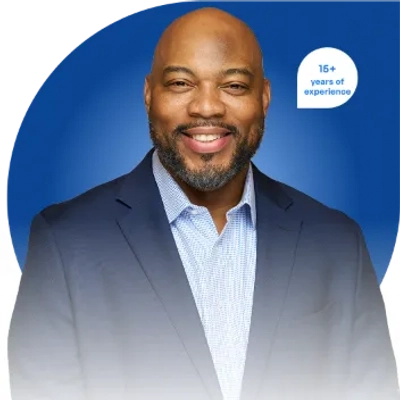
Measure Real Client Impact Beyond Numbers
I’ve been in supply chain and logistics for over 30 years, starting as a district manager at Airborne Express before founding AFMS in 1992. I’ve seen plenty of professionals–and honestly, myself included–face moments where the grind starts to feel routine rather than exciting.
For me, the clarity came when I stopped focusing on *what* I was doing daily and instead looked at *why* it mattered. I started tracking actual client savings more deliberately–not just as numbers for proposals, but as real impact. When I could see we’d saved a client like a mid-sized retailer $340,000 in a single quarter through better carrier negotiations, or helped a manufacturer avoid a 15% cost increase by restructuring their shipping agreements, it reignited that fire. Those weren’t just wins–they were solutions that kept businesses afloat and people employed.
The experiment that helped most was taking on a client project outside my comfort zone–working with a nonprofit on their logistics instead of just Fortune 500s. The constraints were tighter, the stakes felt more personal, and it forced me to get creative again. When you help an organization with limited resources save 22% on their shipping costs, you remember why you got into this work in the first place.
If your passion is fading, find one project that reconnects you to the actual impact of your work, not just the process. Track something measurable that matters to someone else, not just your quota.
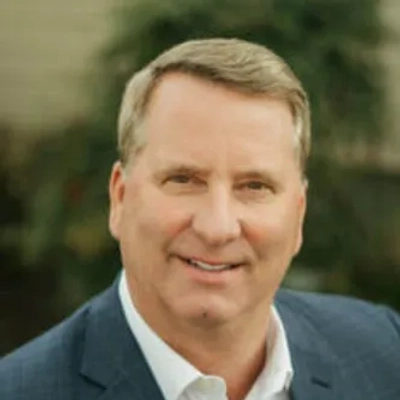
Return to Ground Level Warehouse Operations
I didn’t do a creative exercise–I did something visceral. When I was questioning whether to keep pushing in retail, I forced myself back into a warehouse for a weekend. Not as a consultant or analyst, just loading boxes and counting inventory like I did at 16. If I felt relief being away from spreadsheets and site models, I’d know I was done.
Instead, I got angry. I watched the team struggle with outdated inventory software that created phantom stockouts, and I immediately started sketching how better data could fix it. That rage-into-problem-solving reflex told me everything–I wasn’t tired of retail, I was tired of watching it operate inefficiently.
The clarity came from one specific moment: a warehouse manager complained they’d miscounted inventory three times that week because their system lagged. I pulled up demographic data on my phone and showed him how similar data delays were costing our real estate team $50K+ per bad site decision. When I got more excited explaining that connection than I’d been in months at my desk, I knew exactly where my passion actually lived.
If your “fading passion” gets reignited when you’re back at ground level solving real problems, it’s not fading–you’ve just gotten too far from the work that matters.

Journal Daily About Each Aspect You Revisit
The exercise that allowed me to see if I wanted to revive my waning passion was an experiment I call a “passion audit.” I gave myself a week to purposely revisit the aspects of my projects and work that once interested me: writing, strategy sessions, mentoring up-and-coming leaders and the like, while daily journaling my energy and feelings about it all. I took a systematic, almost scientific approach to it, recording what initiated genuine curiosity for me, as opposed to what felt obligatory. This quirky reflection made it easy to see patterns that were otherwise hard to discern in the day-to-day grind of things. By steeping myself in the work I loved and observing my own feelings, I was able to know the difference between legitimate nostalgia for previous love and authentic, sustainable passion.
The activity provided clarity by revealing where my energy flowed naturally, as opposed to draining it. The recording and watching provided clarity by removing biases and assumptions regarding what pursuits were still valuable. It became obvious what was worthy of my investment and what was worthy of detaching from. It gave me a purposeful, confident, actionable direction.
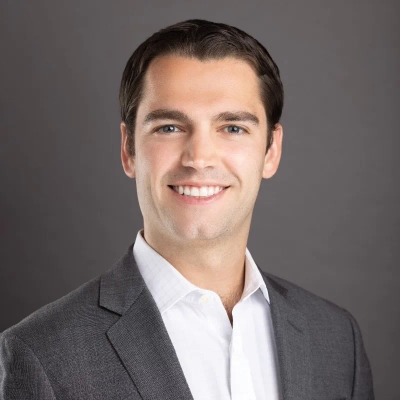
Record Energy Scores Before and After
For two weeks, I kept a spreadsheet record of my energy levels. Before and after every activity, I gave myself a score between 1 and 10. Although I continued to skip practice, I still enjoyed the idea of playing the guitar, so I recorded my feelings before and 30 minutes after.
The figures were brutal. I averaged four coming out and six going in. Rather than giving me energy, it depleted me. Simultaneously, I continued to score higher after each session of another hobby I tried. The decision was evident from the data. You should stop doing something if it makes you feel more exhausted than when you began. I haven’t missed it since I sold my guitar two months ago. Tracking stripped away the narrative I told myself about what I should enjoy.

List What Drains You Versus Energizes You
We all come to a point in our careers where we feel our passion is slipping away. I remember that time when I reached my point, and I really had a hard time. But one exercise that helped me overcome this was something I call a “silent check-in”. I set aside a full day away from work and distractions. I listed which parts of my job gave me happiness and excitement, and which parts were draining me. I paid attention to what my body and mind reacted to. I didn’t solve it right away. It made me feel much better to see everything listed on the paper. I realized that I was just overwhelmed by tasks, and I was not really losing interest in healthcare at all.
That realization made me focus on my shift again. I changed how I structured my week, and I spent more time mentoring new nurses. I learned from that exercise that passion usually fades when your daily work does not align with your values. It’s always good to step back and reflect. Be honest with yourself as well. Doing this will help you reignite that passion that’s fading away, or maybe it will help you move forward in another direction.

Remove All Expectations for One Full Week
When I felt my passion fading, I tried an experiment called “no-stakes creation.” For one week, I worked on the same craft but removed all expectations. There were no deadlines, no clients, and no goal except enjoyment. That separation from the business side revealed what I actually loved about the work versus what had become an obligation.
By the third day, I realized the spark wasn’t gone; it was buried under pressure. The clarity came from rediscovering the parts that felt effortless and letting go of what felt forced. If the joy returns when the stakes disappear, it’s worth reviving. If it doesn’t, it’s probably time to move on.

Set a Strict Timer for Flow
The exercise that gave me the sharpest clarity was setting a strict thirty-minute timer and forcing myself to work on the passion project with zero distractions. In reality, that timeframe acted like a spotlight that revealed whether I slipped into flow or felt drained within minutes. The body gives feedback long before the mind sorts out excuses. Seriously, the lift or drag you feel inside that tight window tells the truth you were trying to avoid. To be fair, I used the same test across different projects, and the pattern stayed consistent every time. That being said, the timer created a pressure-free way to measure genuine pull versus obligation.

Immerse Yourself in Extended Silent Focus
The creative experiment that gave me clarity was something simple on paper but surprisingly revealing. I took a full weekend and forced myself to spend exactly six hours on Saturday and six hours on Sunday doing nothing except the task I thought I was losing interest in. No podcasts, no music, no noise, just total immersion with a timer set for 360 minutes. In reality, the silence showed me whether my mind drifted or whether I kept leaning in without noticing the clock. Honestly, you can learn a lot from where your thoughts wander after hour two, three, or four. The devil is in the details, and extended focus exposes the real story.








